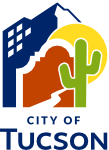Microfiche records prior to 2006 have not been completely digitized and may not be available yet on PRO. If you can not find what you are looking for please submit a records request.
Permit Review Detail
Review Status: Completed
Review Details: COMMERCIAL - TI
Permit Number - T15CM05144
Review Name: COMMERCIAL - TI
Review Status: Completed
| Review Date | Reviewer's Name | Type of Review | Description | Status | Comments |
|---|---|---|---|---|---|
| 08/12/2015 | KEN BROUILLETTE | FIRE | REVIEW | Approved | |
| 08/21/2015 | ROBERT SHERRY | WATER | REVIEW | Reqs Change | Provide the size of the water meter serving this suite, the size of the backflow preventer associated with the water meter, and the total water demand served by the water meter. Reference: Section 107.2.1, IBC 2012. |
| 08/24/2015 | ROBERT SHERRY | PLUMBING-COMMERCIAL | REVIEW | Reqs Change | 1. Clarify the connected loads or input ratings for each appliance. Southwest Gas provides natural gas with an energy content of approximately 1,000 BTU per cubic foot. Revise the pipe sizes as required and show the required size for each pipe section. Reference: Section 402.1, IFGC 2012. 2. Revise the size of the natural gas pipe serving the water heater per Table 402.4 (2). Reference: Section 402.4, IFGC 2012. 3. Verify the required input gas pressure to the cooking appliances. Southwest Gas provides natural gas at 7" WG, 2 PSIG, and 5 PSIG. Appliances needing gas service at 7" WG or greater will require a gas meter that delivers at least 2 PSIG gas into a regulator located after the meter set. Reference: Section 402.1, IFGC 2012. 4. Provide a detail of the booster water heater installation, including the excess pressure/temperature relief, expansion tank, safety pan, and valves. Reference: Sections 503, 504, 606.1, and 607.3, IPC 2012. 5. To what appliances is the booster water heater supplying 180 degree Fahrenheit water? Reference: Section 107.2.1, IBC 2012. 6. Clarify the installation of the plumbing fixtures in the bar area. Provide a riser diagram and show how the fixtures are to be vented. 7. The developed length of the hot water supply piping from the water heater to the hand sink in the bar area appears to be greater than fifty feet; provide a method for maintaining the temperature of the hot water supply system. Reference: Section 607.2, IPC 2012. 8. Provide a cleanout for the section of the building sewer located immediately downstream of the gravity grease interceptor. Reference: Section 708.3.2, IPC 2012. |
| 08/25/2015 | ROBERT SHERRY | MECHANICAL-COMMERCIAL | REVIEW | Reqs Change | 1. Clarify the submitted ventilation calculations for HP-1 with respect to the total air flow supplied by the heat pump. Only 1200 CFM is shown on the plans but a 5-ton unit nominally supplies 2000 CFM. 2. Clarify the submitted ventilation calculations for HP-3 with respect to the areas being considered as "corridors" as compared to the dining area. Also, clarify the actual airflow supplied to each area; 3640 CFM is identified on the drawing but the calculations show a total of 3800 CFM. 3. Provide the dimensions of the grease duct and the make-up air duct for the new Type I hood. Reference: Section 107.201, IBC 2012. 4. Specify the materials of construction for the make-up air ducts and the insulation for the make-up air ducts within 18" of the Type I hood. Reference: Section 506.3.1.2, IMC 2012. 5. Revise the installation note for the grease exhaust fan to call for a minimum termination height of 40" above the roof. Reference: Section 506.3.13.1, IMC 2012. 6. Show that the exhaust fan for the Type I hood complies with Sections 506.5.1 through 506.5.5 or is listed and labeled for the application (e.g. UL 762). Reference: Section 506.5, IMC 2012. 7. Provide structural calculations to show that the Type I hood is supported from the building structure in accordance with Section 507.6, IMC 2012 (the hood hanging weight plus the weight of personnel working in or on the hood). Reference: Section 302.1, IMC 2012. 8. Show that the hood installation complies with Section 507.9, IMC 2012 for clearances from the top of the hood to combustible materials. 9. Clarify the air balancing data for the make-up air for the Type I hood. Note #4 of the Hood General Notes calls for 2970 CFM of supply air to the hood using a 3500-CFM evaporative cooler. What happens to the extra make-up air? What is the source of the additional make -up air? Reference: Section 508.1, IMC 2012. |
| 08/25/2015 | DAN SANTA CRUZ | ELECTRICAL-COMMERCIAL | REVIEW | Reqs Change | Please address the following electrical plan review comments. #1. Plan sheet 2. Please clarify if the Emergency Lighting is new or existing. If new, provide circuit and panel designation. #2. Plan sheet 4. Plan shows a new 3500 cfm Evap. Cooler and a new type one Hood / Exhaust fan. Please justify the "NO CHANGE IN LOAD" notation on the plans. Also provide complete panel schedules including load calc's, wiring methods for all new equipment. Ref: IBC sec. 107.2.1, NEC art. 300, 408, 422, 440. |
